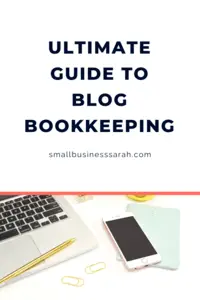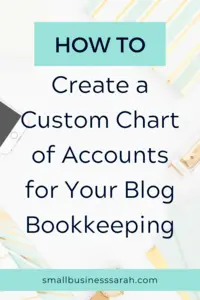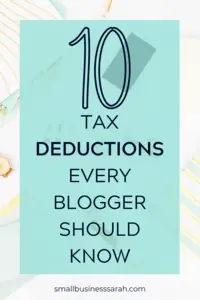I'll let everyone else tell you how to generate revenue from your blog. I'm going to explain how to make sure you have a profitable blog! Isn't revenue and profit the same thing? Nope. Revenue is the amount of money your blog business brings in. Profit is what's leftover after you've paid all of your expenses. Believe me, a blog that brings in lots of revenue is not necessarily profitable. I've seen it happen plenty of times! You want to be profitable, so let me show you how!
More...
This post is for informational purposes only and may contain referral links. See my disclosures here.
Know Your Numbers
If you don't know how much money you make and how much money you spend, you won't know if you are profitable.
Many people just wait until the end of the year, and hurriedly add up receipts just for tax purposes. But if you wait until the end of the year to determine if your business made money or lost money, then you are missing out on an opportunity. You are missing out on the ability to see how profitable (or not profitable) your business is in real time. When you have tabs on the financial health of your business throughout the year you can make sound financial decisions that positively affect your bottom line. Don't be surprised at the end of the year, know your numbers each and every month.
It's super easy to know your numbers. The first step is to make sure you are using separate financial accounts for your business. No charging the odd Starbucks run to your business credit card, no way. Keep your business finances completely separate from your personal. When you want to pay yourself, here's how you do it, not by buying yourself a coffee!
Second, you need a bookkeeping program to help you with your blog finances. My favorite is QuickBooks Simple Start. You link up your business financial accounts, and QuickBooks automatically pulls in your transactions. Then you simply categorize those transactions with a click of a button. Your categorized transactions produce a totally legit Profit & Loss statement. If you haven't been using a bookkeeping program, I promise that seeing your first Profit & Loss statement will be eye opening!
Control Your Spending
I bet you already know, deep in your heart of hearts, the area of business spending that is your Achilles heel. The business temptation you can't resist. Maybe you are a glutton for online courses. Maybe it's the online tools, running ads, hiring virtual assistants, or even buying business books. You already know where you spend too much money, don't you?! If you take the step above and see your first ever Profit & Loss you will definitely know!
I see it so often, a blog business that is bringing in a decent amount of revenue, only to spend it all on online courses and bright shiny objects. You don't want that to happen to you.
Here is what we are going to do next time your tempted to spend $1,000 on the course that will change your blog business forever . . . . you are going to wait a day before you buy. That's right. I know the webinar was super convincing, and those bonuses were amazing, but you are going to wait. You will never have time to use all those bonuses anyway.
If after a day's worth of careful thought the book, course, or ad spend still seems like a good idea, then go for it. I promise you, this tactic alone will increase your blog profits.
Create a Basic Budget
I'm not talking about a crazy complicated budget, but a super simple one.
Let's find an estimate of your monthly revenue first. Pull up your Profit & Loss from QuickBooks Simple Start and average the months. If you aren't using QuickBooks, then grab your bank statement and find the average of your monthly deposits. Write that number at the top of the page.
Next, how much do you like to pay yourself each month? Do you transfer $400 a month from your business checking to your personal? $800? $1,000? Subtract that amount from your monthly revenue. What's left is how much you can spend each month to run your business. And guess what, if you don't spend it, that's more money you can pay yourself.
Next subtract the monthly amounts you must pay to run your business. Things like your website hosting, email service provider, and online tools you can't live without. If you use QuickBooks, look at the expense portion of your Profit & Loss so that you don't miss anything. Don't forget to include a monthly amount for the expenses you pay for annually. If you don't use QuickBooks then scan your monthly bank statements and credit card statements.
Next, we're going to subtract some wiggle room. You can determine this amount. I would suggest about 10% of your monthly revenue for expenses you may have missed.
What we have left is your discretionary business spending per month. You can spend this on business books, courses, fancy new online tools, or whatever sparks your fancy. Conversely, you could pay yourself a little more each month with this money.
This quick and simple budget can be very revealing of the profit that might be possible. Use it to motivate you to say no the next time you are tempted to purchase something on a whim.
That's all there is to it. To make sure you have a profitable blog, you need to understand your finances, and curb your spending. It's not fun and flashy, but it's so important! What did your Profit & Loss or simple budget reveal to you?




